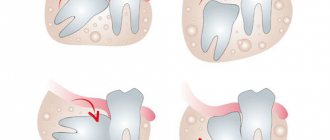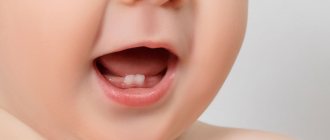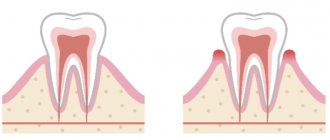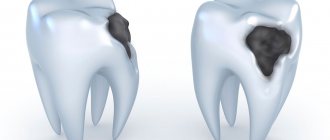Indications and contraindications Pros Cons Implantation process Alternatives
Teeth transplantation from your own dentition is a procedure that is used as an alternative to implantation. Every person has teeth that are not involved in the chewing process, do not affect the bite and do not perform any important functions. These are wisdom teeth. They are the ones who most often become donor teeth. But not always.
There are teeth that grow outside the arch, spoil the smile, and provoke inflammation. You can get rid of the problem through orthodontic treatment: installing splints, plates, braces. There are times when the only option is deletion. Then the tooth has a chance to benefit its owner. It can be transplanted to a place where a tooth is lost or planned to be pulled out.
Another source of donors for transplantation is supernumerary teeth. Some people grow double teeth. Such units are direct candidates for removal. At the same time, they can be beneficial by replacing a sick or lost brother.
Indications for use
Autologous tooth transplantation may be necessary in the following cases:
- tooth loss due to injury;
- the need for removal due to widespread caries (deep type);
- congenital absence of a tooth when there was no germ;
- removal is done for orthodontic purposes, since the tooth affects the malocclusion.
You can find cases of transplanting your own tooth in childhood or adolescence. This is due to the fact that implantation is contraindicated before the age of 18, since the jaw bones are growing and are not yet fully formed. And the survival rate of your own tooth is almost the same as that of an implant, and with a good outcome of the operation, it will grow and develop along with its owner. The work of the orthopedist will move the teeth so that the empty space of the taken donor will not be noticeable.
Comment (0)
Is it worth doing a natural tooth transplant?
Apr 23, 2022, Artyom Kochkanyan
Lately, I often see that dentists offer a “new” service - transplantation of your own tooth. That is, in place of, for example, an extracted chewing tooth, the dentist transplants a wisdom tooth taken from the patient himself.
As a rule, we are talking about transplanting an impacted tooth, that is, one that remained under the gum and did not erupt. But options are possible when the dentist takes the erupted “eight” for transplantation. I can’t say that this is know-how. The method has been known since the last century, and, fortunately, is currently not often practiced by surgeons.
Is it worth getting a tooth transplant?
My unequivocal opinion: not worth it. And that's why:
- In the cases of tooth transplantation known to me, they took root only in 40% of cases . In other cases, the transplanted tooth was rejected. Are you willing to take that risk to save a little money? For comparison: the survival rate of modern titanium implants is 99.8%. As they say, statistics are inexorable.
- When patients are observed for 2 years, the roots of the transplanted teeth dissolve and teeth fall out in a third of patients . And again the question of tooth restoration arises, now only with the help of implantation.
- Wisdom teeth, unlike other teeth, can have quite a lot of roots, and the roots themselves can have the most bizarre shapes. And in order to correctly place such a tooth in place of the chewing one, additional traumatic manipulations may be required.
- If we are talking about transplanting erupted or partially erupted wisdom teeth, then such teeth are usually damaged by caries. Therefore, they will need to be treated before transplantation. In addition, any transplanted tooth will have to be “mortified” - that is, the nerves will be removed and the canals of the tooth will be filled. As practice shows, the service life of a “dead” tooth does not exceed 5-7 years , after which the tooth becomes covered with cracks and can fall apart right in the mouth.
- It is not always possible to remove a wisdom tooth without damaging the crown part. This is the visible part of the tooth, covered with enamel. Such a tooth will require a filling or even a crown. I personally don’t understand why a treated or re-treated tooth should be transplanted.
- One of the vital requirements for surgical dental restoration is sterility. The required level of sterility during wisdom tooth transplantation cannot be ensured. Therefore, there is a risk of gum inflammation and, subsequently, serious inflammation of the jaw bone. There is a high risk that you will lose not only the transplanted tooth, but you may also lose several neighboring ones due to extensive inflammation.
What are the alternatives?
In my opinion, there are two of them.
The first alternative is classic implantation using a titanium dental implant and an artificial tooth made of dental ceramics. I personally think Astra is one of the best implants. This is a Swedish company that has been producing implants for 30 years, if not more. And all this time they collected data on the behavior of their implants around the world: how they take root, whether everything is good, how long they last. By the way, the service life of implants now exceeds 15 years, and not a single patient of mine had problems with Astra implants.
In my practice, Astra implants take root in almost 100% of cases . When installing the implant, complete sterility is ensured, and the operation takes an average of 30-40 minutes. Without risk to the patient's health, with the highest guarantee of success, with high aesthetics. Everything I like.
The second alternative is to work with an orthodontist to simply pull a wisdom tooth or group of teeth into place that was removed using segmental braces. Not on the entire jaw, but only on the area with the missing tooth. In most cases, people around you will never see that you have braces. It will take several months to move, but all your teeth will remain intact.
And finally, let me give you advice: do not make hasty decisions, especially when it comes to your health. Check the information, consult with doctors, read materials from professional dentists, check reviews. In this case, you will be satisfied with the result and maintain your dental health for many years.
Artem Kochkanyan, master of smiles
You can make an appointment with Artem Kochkanyan by calling 8(495)120-17-36 or on the website.
Contraindications for carrying out
First of all, a young patient must be psychologically ready for autotransplantation; it is much easier for adults to take this step. The procedure cannot be performed if:
- there is not enough space between adjacent teeth to restore the void with a dental graft;
- bone diseases can interfere with survival;
- local inflammation in the oral cavity;
- psychological diseases;
- autoimmune diseases, diabetes, cardiovascular problems,
- poor oral hygiene.
Minuses
- Transplantation of your own tooth has many restrictions: the tooth must meet all parameters and be healthy.
- After transplanting the formed tooth, endodontic treatment is carried out - the nerve (pulp) is removed and the canals are filled.
- If a lot of time has passed since the loss of the tooth, bone grafting (bone grafting) is needed. While more and more implantations are carried out without it.
- The operation is rare, and few doctors have sufficient experience. It is easy to gain experience in implantation; operations are performed every day. Wisdom tooth transplantation is a rare event. Transplantation of impacted and “extra” teeth is generally a rare occurrence, especially in small dentistry.
How it is carried out: stages of treatment
Autotransplantation requires a tooth with healthy characteristics. For these purposes, a rudiment with a dental follicle, which contains cells ready for growth and development of the root system, works very well. Wisdom teeth are taken to replace 6 and 7; if the front tooth is injured, then any suitable 4.5 can be taken. Often, for upper losses, the donor is the lower teeth, because the lower tissues are restored well.
- Diagnostics. X-rays and CT scans are used to evaluate the condition of the jaw bone and tooth roots;
- Creation of a computer model of the donor tooth. It is printed on a 3D printer based on CT data;
- Extraction of an infected or decayed tooth;
- Treatment of the hole with an antiseptic and antibiotic. If the place has been empty for a long time, the hole is formed surgically;
- Trying on a 3D model of the tooth so that the shape of the hole for the roots fits perfectly;
- Removal of a healthy tooth or germ. One of the important points is to preserve the ligamentous apparatus. The success of donor integration depends on its viability;
- Transplantation of the removed tooth to a prepared site. The time between extraction and installation should be no more than 25 minutes for the donor tissue to function normally;
- Splinting and suturing.
After a few days, the sutures are removed, and after 25 days, the splints are removed. Then the orthopedic correction begins.
Types of Dental Bone Grafts
Another concern for patients is the type of dental bone graft. Because the quality and material of the grafts, as well as the procedure, are important to them. Dental bone grafts are divided into four types based on their origin and components:
Allografts
Allografts are obtained from the bones of another person, usually a corpse. Patients generally do not prefer to use these types of grafts, but dentists use them widely today. Allografts themselves come in various forms, such as the socket graft and the lateral ridge sparing graft . The main goal of socket grafting is to avoid alveolar bone atrophy. A lateral ridge preservation graft is used to expand the jawbone to accommodate a dental implant.
Autografts
These types of grafts contain bones from your own body, such as your hip or jaw. Block bone graft is a well-known example of an autograft. Dentists use this type of graft when there are significant defects in the jawbone.
Xenografts
These grafts are made from bones from other species, such as cows, pigs or coral. Dentists often use these grafts to treat jaw bone defects.
Alloplasts
The newest type of dental bone graft is completely artificial and made from compounds such as calcium phosphate or calcium phosphosilicate.
Expert opinion
Igor Yurievich Malinovsky
Maxillofacial surgeon, implantologist
Experience: more than 11 years
Transplanting teeth from one area to another is not widespread. The risks of complications are quite high; the tooth may not take root. And it is morally difficult for the patient to experience psychological stress again. Especially considering that these are often children - teenagers, boys and girls. Among dentists there is no clear opinion on this method of restoration. And I am also inclined towards temporary prosthetics, until the time when it will be possible to put reliable and comfortable crowns on the implants. Of course, it is worth mentioning that autologous dental transplantation should not even be considered for older patients.
How much does a tooth transplant cost?
Each dental clinic sets its own prices for autotransplantation. And the price depends on the status of the center, the qualifications of the doctor, the complexity of the operation: whether the removal will take place during the operation or whether the work will take place in an already empty place, the anterior or chewing units will be replaced. But on average, transplanting your own tooth will cost from 25,000 to 45,000 rubles.
It seems that transplanting your own organ to yourself is much cheaper. Since there are no costs for expensive materials: implant, abutment and crown, or the work of a dental technician. “Everything is yours” as they say. But the price is not much lower than implantation.
After autotransplantation 2 weeks
Patient Kim came to us after 2 weeks
for medical examination and suture removal:
Nothing bothered her anymore. The tooth had acceptable physiological mobility. The gums have become lighter. Of course, all the purple color is not gone yet, but she has already become more pink.
Pay attention to the white area - this is not pus, but fibrin plaque, which we will talk about in more detail below.
The picture shows that the donor tooth has clearly positioned itself in the position of the extracted tooth 46:
Our Kim has a new six molar. Both the patient and the medical staff of the Research Center are very pleased with the outcome of the tooth transplantation operation.
What are the alternatives?
Instead of autotransplantation in dentistry, there is a choice - implantation or prosthetics.
Implantation allows you to install an artificial root into the hole and load it with a prosthesis, a crown. The implant is made of titanium alloy and has a surface treated in a special way, which allows it to take root with 99% success. The manufacturer provides a lifetime warranty on many implants.
Prosthetics will help hide the empty space using an orthopedic design. The bridge will be supported by supporting teeth and perform an aesthetic function.
What the patient needs to know
Having decided to restore your jaw using this type of osteoplasty, before the operation the patient must stop smoking several weeks before, avoid physical activity, and in the last week - follow a home regime.
After the operation, it is necessary not to load the jaws by chewing hard food, to spare the operated side while eating, and to follow the doctor’s recommendations. If discomfort is felt after the end of the anesthesia period, the patient is prescribed a course of anti-inflammatory and non-steroidal drugs. Autotransplantation is guaranteed to provide a positive result if you entrust its implementation to the professionals of the Implantmaster clinic, who will handle it quickly and efficiently.










